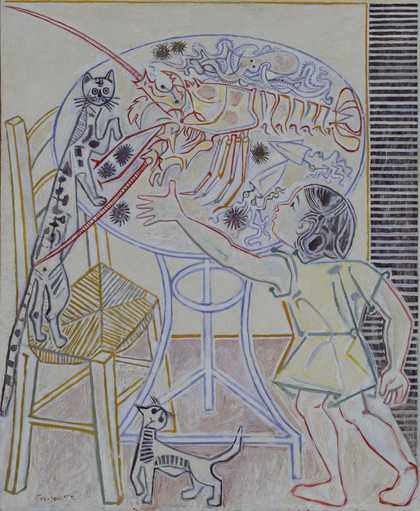Mai-Thu Perret on William Morris’s La Belle Iseult 1858
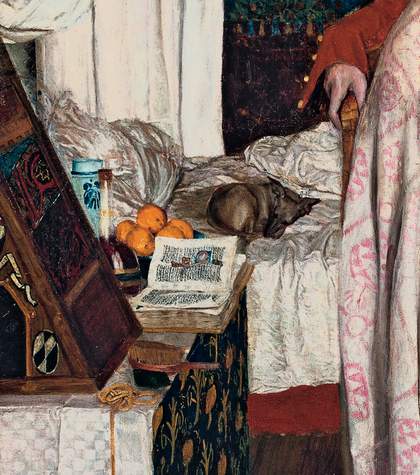
When I first read Tristan and Iseult I was very struck by a version of the story, I don’t remember which one, where a small river or furrow ran through the great hall of the castle, and where Tristan has to step over sleeping bodies and make his way through various layers of curtains to get into Iseult’s bed at night. There was not much privacy in medieval castles, and curtains and tapestries were used as mobile walls against the cold and also to divide space up into individual chambers.
In William Morris’s depiction of Iseult’s bedroom fabric is also everywhere, and he has devoted an extraordinary amount of care to depicting all these folds, all these different textures and motifs. Most of the patterns he chose to paint are florals or evocations of plants and the natural world, and they connect us to the magical bower where Tristan and Iseult used to meet.
I love the creased bed sheets and pillows, the sleeping little whippet, the jumble of objects on Iseult’s bedside table, the white jacquard table cloth with the checkered pattern, the untouched wine and uneaten fruits, her open missal and her mirror which looks just like another patterned textile, not like glass at all. Iseult is pining for Tristan, but that little section of the painting still feels very intimate and warm, and it hurts to look at it in contrast with her forlorn and slightly wooden face and the vastness of the hall in the background.
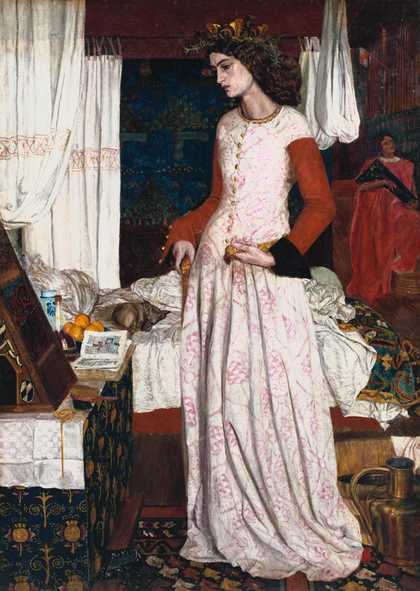
William Morris
La Belle Iseult (1858)
Tate
Paul Kingsnorth on J.M.W. Turner’s The Fall of Anarchy c.1833–4
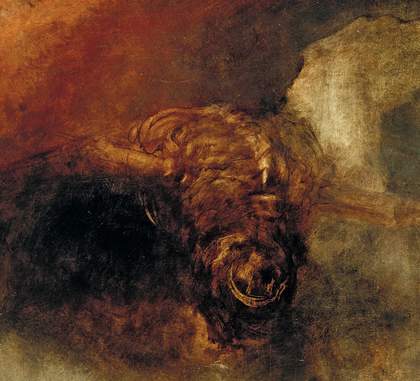
It is a dream, a vision, a night terror; an unasked-for inspiration, a gift or a curse, given and taken down. A glimpse into the abyss or through the veil. The sky is on fire, white light battles with red and Death comes on a pale horse. But what is this? Death himself is dead, or dying. Slumped over his saddle, his head flung back. Look at that head. Turn the image upside down and look at the face. Is this Death? It is strangely calm. The mouth does not hang open, but is set in a line, neither smiling nor frowning. The face is long and angular, noble, long-suffering – sympathetic. Keep looking. It is not a skull at all, is it? Are those eyes in the sockets: faint, looking back to the left, to where the horse has come from? Is that a shock of black hair? It is a woman, isn’t it? A woman wearing a crown: a ring of gold mocking her rotten body.
Death comes on a pale horse, but Death has suffered and the suffering is in her face, the face too small for the body, as if it were superimposed, as if it were from some other dimension. As if it were alive and seeing while all around is dead or dying. The top of her head flames out like a beacon as the horse gallops on. There is smoke. She is watching you: do you see?
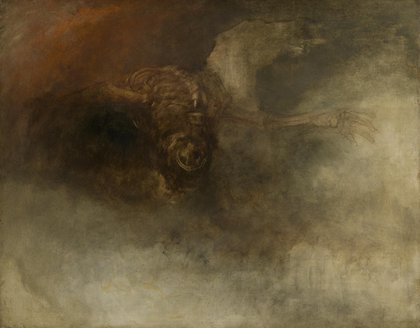
Joseph Mallord William Turner
The Fall of Anarchy (?) (c.1833–4)
Tate
Dimitris Daskalopoulos on Gerhard Richter’s Abstract Painting (726) 1990
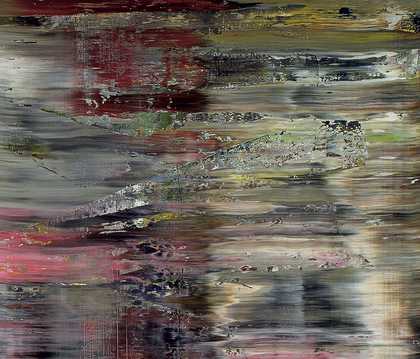
The absolute truth: ‘Go to the Richter exhibition and zero in on any square inch of an Abstraktes Bild. In it you will see everything you know and everything you do not know.’
It was back in 2011, and Gerhard Ricther’s Panorama exhibition had just opened at Tate Modern, when I made this statement during Frieze after having spent almost a full hour that morning lost in a square inch of one of his abstract paintings – this one in particular.
Since then, every time I am near a Richter, I try not to miss the moment of escaping into this square inch of mine. Randomly selected, this process allows me the rare opportunity to experience time in my own time. An impression of what seems like a moment of infinity is created. I can’t help bringing to mind art critic and painter Robert Storr’s observation on Richter about sharing ‘a willingness to let go of certain kinds of control in order that other things happen’. It is these ‘other things’ that happen which make me feel as if time has been paused and silence can be heard. Then music plays and travel in the secrets of the universe commences.
You may see the reflections of your life’s mirrored reality unveiled like an image under water. A pure confrontation with the unexplainable in a moment where reality is blocked out, a pure existential moment, allowing you to experience your absolute truth.
Justin Fitzpatrick on John Craxton’s Still Life with Cat and Child 1959
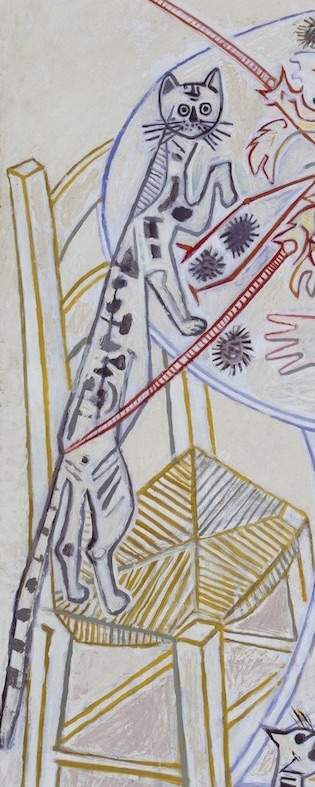
I waited until I was alone, until all the others had gone outside, and then I placed my paw on to the wooden floor and, with my claw, proceeded to scratch a single groove in the wood. I then added two short horizontals on to this vertical line at the top and the bottom.
I… I am… I am resurrected in this new form.
The markings down the length of my body acknowledge the accomplishments of my previous incarnation. When I lift myself on my back legs, when I stand up almost-human, one can trace a kind of glyph running up the length of my spine. It describes, for those who have eyes to see it, ‘Scala Naturae’, the great chain of being, a systemised hierarchy of the physical world which I myself devised: from mineral, to plant, to animal, to man, to angel, to God. A divine taxonomy. Everything in its right place.
Except now I find myself in the wrong place, the wrong body. Ugh, this body. To have your pink puckered rear parading around despite yourself and without any chance of decency. I loathe it. When I lived as a priest, I classified the sins of the flesh. In descending order of severity: Bestiality, Sodomy, self-love (the sin of Onan).
It is this last sin that I have been unable to stir my mind away from recently. I spend my days distracting myself from the fact that given my new physiology, my flexibility, I am always in constant threat of succumbing to the polymorphic pleasures of this new flesh. I start to doubt my taxonomies. Perhaps it is a gift, this flexible talent I now acquire? Could it be that this new form has been given to me to discover a paradise, an Arcadia, within the limits of my own body?

